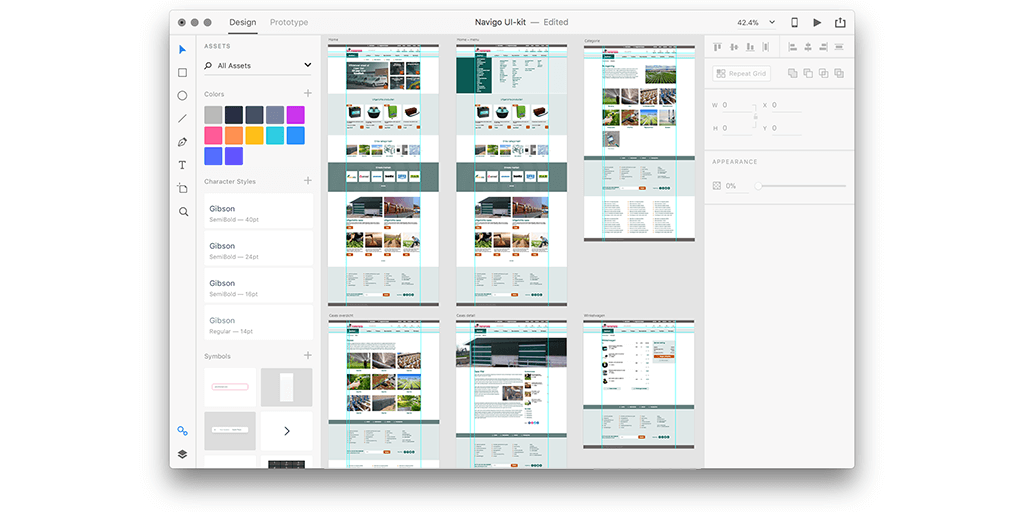In today’s digital landscape, maintaining a robust user base through customer retention strategies and engaging customer interactions on social media is as crucial as acquiring new users during their customer journey. Effective user retention strategies for digital products are essential in fostering customer satisfaction, loyalty, and ensuring long-term success through satisfied customers and positive customer interactions, expanding the customer base.
This post delves into practical approaches and customer retention strategies to keep your customer base engaged, reduce churn rates through customer retention programs, and ultimately drive sustainable growth along the customer journey. From personalized experiences to leveraging analytics for insights, we explore how companies can implement these strategies to maintain a competitive edge in the ever-evolving digital marketplace, engage their customer base, and utilize social media to connect with clients.
- Understanding User Retention
- Calculating User Retention and Customer Retention Rate
- Personalizing Customer Experience for Retention
- Revamping the Onboarding Process
- Engaging Users Through Targeted Content
- Leveraging Loyalty Programs and Gamification
- Prioritizing User-Friendly UI and UX
- Fostering a Robust User Community and Support
- Closing Thoughts
- Key Takeaways
- Frequently Asked Questions
Understanding User Retention
Tracking Activity
Tracking user activity is crucial. It helps understand how customers interact with your digital product through social media and enhances social listening and customer service. You can see what features clients access the most and where customers might struggle and need help.
By analyzing this data, you can make informed decisions. For example, improving certain features or fixing bugs in a way that causes frustration for customers, offering something. This proactive approach keeps users engaged for longer periods.
Business Growth
User retention has a direct impact on business growth. Keeping existing customers in a SaaS business through social media is more cost-effective than acquiring new ones. High retention rates of customers often lead to increased revenue and brand loyalty for a company.
Businesses with strong retention strategies, especially in digital services and SaaS, see better customer lifetime value (CLV) and company customers. They also enjoy a competitive edge in their market.
Retention Strategies
There’s a difference between short-term and long-term retention strategies in the way businesses retain information from customers.
- Short-term strategies focus on immediate customer engagement after sign-up for digital services in a business company.
- Examples include welcome emails, introductory offers, and tutorial guides.
- Long-term strategies aim to maintain interest over time.
- These digital services involve regular updates, personalized content, and rewards for loyal customers with social information.
Both types of strategies are important for sustaining customer interest in digital services and preventing churn for a business or company.
Calculating User Retention and Customer Retention Rate
Retention Formula
Understanding how to calculate the retention rate is crucial. The formula is simple but powerful. To find your retention rate for your SaaS business offering digital services, subtract the number of new customers acquired during a period from the total number of customers at the end of that period. Then, divide by the total social SaaS company customers at the start of the period, and multiply by 100 for a percentage.
This calculation gives insight into how well your SaaS business’s digital service keeps its customers over time. It’s an essential metric for any SaaS company focused on long-term success with customers in the social space.
Periodic Analysis
Analyzing retention rates periodically is vital for growth. Regular analysis helps identify trends or issues early on. This proactive approach allows for timely adjustments in strategies to improve user engagement and satisfaction in digital services, SaaS, and social platforms for customers.
Businesses should aim to review their customer retention rates monthly or quarterly to improve company service and social engagement. This frequency ensures the company is always up-to-date with their business performance metrics and can respond swiftly to changes, keeping customers engaged on social platforms.
Industry Benchmarks
Comparing your results against industry benchmarks offers valuable context. Every sector has its average churn rate, which serves as a standard measure of customer loyalty, business appeal, and company product appeal.
By understanding where your company stands relative to these social benchmarks, you can set realistic goals for business improvement for customers. For instance, if your company’s churn rate is above average, it signals a need for immediate action to enhance customer experience or value proposition in your business.
- Pros:
- Provides clear targets.
- Helps gauge competitiveness.
- Cons:
- May not account for unique challenges.
- Can lead to short-term tactics over long-term strategies in business, affecting company performance and customer relationships on social platforms.
Personalizing Customer Experience for Retention
Data Analytics
Data analytics play a crucial role in understanding customer preferences in social business contexts for a company. By analyzing customer interactions and feedback, businesses can identify patterns relevant to customers and the company. These insights allow for the customization of products and services for customers, enhancing the overall customer experience and benefiting the business.
Customization leads to higher satisfaction. Satisfied customers are more likely to remain loyal. They often engage in future purchases, contributing to a high customer retention rate for the business.
Customized Recommendations
Product recommendations should be tailored to individual users. This requires a deep dive into their previous engagements and purchases to understand customers’ behaviors for business improvement. Customization not only improves the customer journey but also increases the chances of upselling for businesses and customers.
Communications personalized based on user data foster stronger connections. Customers feel valued when messages cater specifically to their interests and needs.
Timely Engagement
Engaging with customers at the right time is key to retention. Timely reminders about product features or upcoming deals keep customers interested. Relevant engagement strategies ensure that communications with customers are not seen as intrusive but helpful.
Revamping the Onboarding Process
Simplified Signup
A complex signup process can deter new users. Simplifying this step is crucial. Make it fast and easy.
Reducing form fields can significantly lower abandonment rates. Focus on essential information only. A smoother start increases the number of new customers.
Educational Content
Incorporate guides and tutorials right from the start. This helps in understanding product features better.
Videos or interactive walkthroughs are effective tools here. They guide new customers through functionalities, ensuring a solid grasp of your digital product’s capabilities.
Feedback Loops
Implementing feedback loops early on enhances user experience substantially. It shows you value their opinion.
Regular updates based on customer feedback signal commitment to improvement. This practice encourages loyalty among first-time customers, making them feel heard and appreciated.
Engaging Users Through Targeted Content
Pain Points Addressing
Crafting content that speaks directly to customer pain points is essential. It involves understanding the challenges customers face with digital products. This might include difficulties customers experience in navigating a platform or finding relevant information quickly.
By identifying these issues, companies can create relevant content. For example, tutorials and FAQs are practical solutions. They help users overcome obstacles, enhancing satisfaction and loyalty.
Effective Segmentation
Utilizing segmentation allows for more personalized content delivery. Segmenting your customers means dividing them into groups based on characteristics like age, location, or behavior.
This approach ensures that messages resonate more deeply with each segment of your target customers. For instance, sending product recommendations via email to customers who frequently browse similar items increases relevance and engagement.
Engagement Metrics
Measuring engagement metrics is crucial for refining your content strategy to better serve customers. These metrics include page views, time spent on the site, social media interactions, and customer interactions.
Tracking these indicators helps understand what type of content captures customers’ attention most effectively. Insights gathered from data allow for adjustments in real-time, ensuring continuous improvement in customer retention strategies.
Leveraging Loyalty Programs and Gamification
Reward Systems
Implementing reward systems can significantly boost user retention. Businesses create loyalty programs that offer rewards to customers for specific actions. These actions could be customers making purchases, sharing content on social media, or even logging in daily.
Rewards for customers vary widely but generally include discounts, exclusive offers, or early access to new products. By rewarding users for their engagement and loyalty, companies turn casual users into loyal customers. This strategy not only increases the frequency of interactions of customers with the digital product but also fosters a positive brand image.
Challenges and Achievements
Designing challenges and achievements is another effective method to keep customers engaged. Gamification introduces elements typically found in games into non-game contexts, like digital products, to engage customers. This approach encourages customers to complete tasks in exchange for rewards or recognition.
Challenges should be fun yet achievable for customers; too difficult, and you risk frustrating your audience. Tailoring these challenges to match customer interests ensures they feel relevant and engaging. For example:
- A fitness app might challenge customers to complete a set number of workouts per week.
- An educational platform could reward students for completing courses ahead of schedule.
Achievements serve as milestones marking the customer’s journey through the app or website. They provide customers with clear goals that motivate continued use over time.
Prioritizing User-Friendly UI and UX
Intuitive Design
User experience (UX) is key. Users want easy navigation in digital products. A clear, intuitive design keeps users coming back. Complex designs push them away.
To achieve this, use user data to understand preferences. Tailor the navigation and look of your product accordingly. This makes users feel valued.
Usability Testing
Regular testing is crucial for usability improvements. It identifies issues early on. Then, you can fix them before they frustrate users.
Involve real clients in testing new features or tools. Their feedback helps refine user experience further. Make decisions based on this customer feedback to enhance usability continuously.
Speed Optimization
Users value their time highly. Slow loading times can lead to loss of interest in customers quickly.
Work on speed optimization as a part of your strategy to retain customers.
- Use free templates designed for fast performance.
- Optimize images and videos for quicker loading times. This enhances overall customer satisfaction, making it more likely for users to stay longer on your platform.
Fostering a Robust User Community and Support
Interaction Platforms
Building platforms for user interaction is crucial. These platforms allow users to share feedback and ideas. They also foster a sense of community. Users feel valued when they can voice their opinions.
Platforms vary in form, including forums, social media groups, or dedicated sections within the digital product itself, catering to customers. Each offers a unique way for customers to connect and share experiences.
Customer Support
Offering accessible customer support channels is essential for retaining customers. A strong support team ensures that customers receive help promptly. This leads to a positive experience with the service.
Support can be provided through various means:
- Live chat
- Phone lines
- Social media messaging
The goal is to make getting help as easy as possible for the customer.
Peer Assistance
Encouraging peer-to-peer assistance benefits everyone involved. It builds trust among customers and reduces pressure on the customer support team. Members, including customers, often come up with creative solutions based on their experiences.
This approach has several benefits:
- Faster problem resolution.
- Increased user engagement.
- Strengthened community bonds.
Closing Thoughts
Effective user and customer retention strategies are pivotal for the long-term success of digital products. They have explored various methods, from personalizing customer experiences to fostering robust user communities, each contributing significantly to retaining customers. By prioritizing user-friendly UI/UX and leveraging loyalty programs, they aim to create a more engaging and rewarding environment for customers. These strategies not only enhance user satisfaction but also contribute to a higher customer retention rate, which is crucial for sustainable growth and profitability in the competitive digital landscape with customers.
To stay ahead, it’s essential for businesses to continuously refine their customer retention tactics by embracing innovation and adapting to changing customer preferences. They should consider these strategies as a foundation upon which to build and iterate for customers. For anyone looking to improve their digital product’s customer user retention rates, now is the time to act. Implementing these proven strategies can lead to significant improvements in customer engagement and loyalty, driving the success of digital products forward.
Key Takeaways
- Focus on Personalization: Tailor experiences to individual customers by leveraging data insights, enhancing their engagement, and fostering loyalty. Personalized experiences are more likely to keep customers coming back.
- Revamp Onboarding: A seamless, informative, and engaging onboarding process can significantly improve customer retention by setting the right expectations and demonstrating value upfront.
- Engage with Content: Use targeted content to maintain ongoing engagement with customers. Understanding your audience’s preferences and delivering relevant content can keep customers interested and active.
- Incorporate Gamification: Loyalty programs and gamification strategies can make interactions more enjoyable and rewarding for customers, encouraging them to stay longer and engage more deeply with your digital product.
- Prioritize Usability: Ensure your UI/UX design is intuitive, accessible, and user-friendly for customers. A positive user experience is crucial for keeping customers satisfied and reducing frustration-driven churn.
- Build Community: Create spaces for customers to connect, share, and support each other. A strong community not only enhances customer retention but also turns customers into advocates for your product.
Frequently Asked Questions
How do you calculate user retention and customer retention rate?
User retention is calculated by dividing the number of customers at the end of a period by the number at its start, excluding new users. Customer Retention Rate requires subtracting new customers from the final count before division.
What strategies can personalize the customer experience for better retention?
Personalizing experiences for customers involves using data to tailor interactions and recommendations. This includes adjusting content, offers, and communications based on individual customer behaviors and preferences.
How does revamping the onboarding process improve user retention?
A streamlined onboarding process introduces customers to key features effectively, ensuring they understand the value of your digital product quickly. This initial positive experience increases their likelihood to continue using it.
Why is engaging users through targeted content important for retention?
Targeted content resonates more deeply with users by addressing their specific interests or needs, making them feel valued and understood. This relevance boosts engagement rates and fosters long-term loyalty.
In what ways do loyalty programs and gamification contribute to user retention?
Loyalty programs reward continued use, while gamification adds an element of fun through challenges or achievements. Both strategies increase investment in your product, encouraging regular engagement.
How does prioritizing user-friendly UI/UX affect user retention?
A seamless UI/UX design simplifies navigation and task completion within your digital product. When users find an interface intuitive, their satisfaction rises alongside their willingness to remain active users.
Why is fostering a robust user community important for support and retention?
Building a strong community provides peer-to-peer support which enhances problem-solving resources available to users. It also creates a sense of belonging among members which can significantly boost loyalty towards your digital product.





